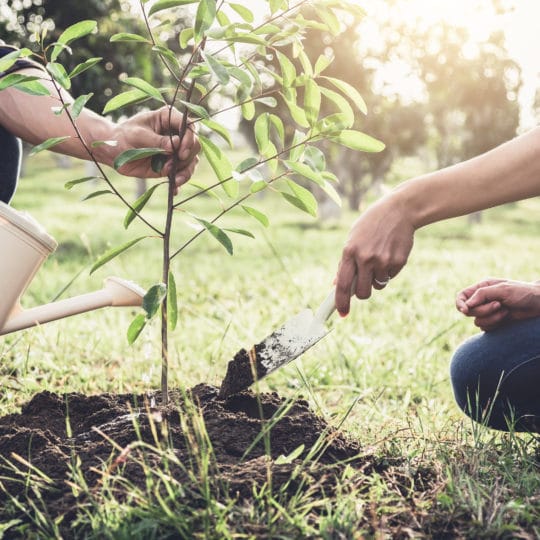How to Properly Plant Trees & Shrubs
Start with a Plan & Grow From There
Posted
March 23, 2023

Spring has sprung! Color is starting to come back to lawns and gardens across the area. If these blooms have you bursting for more, why not consider taking advantage of one of the best times to plant. There’s a way to properly plant trees and shrubs that not only helps them thrive, but also helps prevent problems from springing up in the future.
Before You Plant
Planting a tree takes a little more planning than simply making a purchase and digging a hole. In order for the tree to shrub to survive—and thrive—in its newly planted place, there are some factors you need to consider first.
- Type. Do you have a type of plant in mind? Pick a species that’s native to your area and you’ll have less to keep up with.
- Space. Do you have a spot in mind? Whether it’s a corner of the garden or an open field, make sure there’s enough room for the mature size of your chosen plant.
- Environment. Does your desired spot get enough light? Too much water? How’s the soil? Evaluate the conditions of the area where you plan to plant to make sure it fits the plant needs.
Once you’ve chosen the right tree for the right space you can get to work planting.
Properly Plant Trees & Shrubs
Spring and fall are great times for planting. The temperate weather conditions make it an easier transition for plants to become somewhat established before the harsh heat or cold arrives. The first year is tough enough on a new plant, so you want to make the planting process as painless as possible. Here are some tips to do just that.
- Inspect the roots. Whether you’re planting a new tree or transplanting an older one, notice the condition of the roots before you even purchase or plant the tree. If the roots are dark and stringy, the plant is not in good shape. They should be light in color and slightly plump. You also want to break up any densely packed roots before replanting. This constrictive pattern will only get worse once underground and your plant will suffer for it.
- Prepare the hole. The size of the hole depends on the size of the root ball. You want to make it about twice as wide so roots can expand. Don’t make it deeper than the ball though. The flair of the tree trunk should still be visible once it’s planted. You can even transplant trees with a quarter of the root ball higher than the surrounding soil. Just add a generous layer of mulch later.
- Eliminate air pockets. Once the hole is dug, the ball is placed, and the soil is backfilled, you want to make sure there are no air pockets limiting root contact with soil. Add water once you’ve filled the hole halfway. Then add more soil and repeat the watering process until the hole is filled.
- Mulch. Layers of organic matter helps retain water—newly planted trees are thirsty—and keeps roots cool. Shredded leaves, bark, or wood makes excellent mulch anywhere in your garden, especially around trees and shrubs.
- Water. It takes a while for trees to become established, even if they’ve been transplanted from a different spot in your yard. The right amount of water is an integral part of the process for the first year of that plant’s new life. Set up a regular schedule and taper off gradually. For instance, a new plant should be watered every day for the first two weeks. Then it can wait every other day and so on. Adjust the schedule when it rains or if there are drought conditions.
Watch your new plant for signs of stress like discolored leaves or early leaf drop. Some of this is normal stress related to a new environment. But if it doesn’t seem to be improving, contact Cardinal Lawns for a consultation and more strategies on how to help your newly planted trees and shrubs survive in any season.

Download Your FREE Summer Plant Care Guide
Help your plants make it through a hot & dry summer looking like a million bucks with our summer plant watering and maintenance guide!